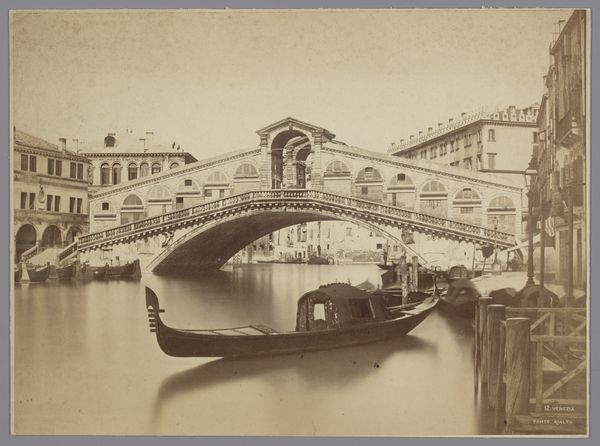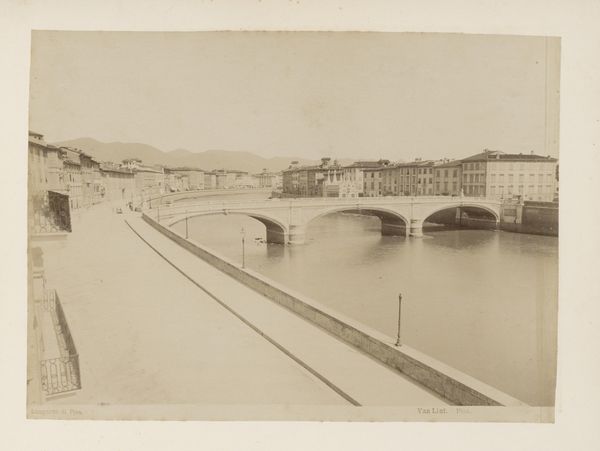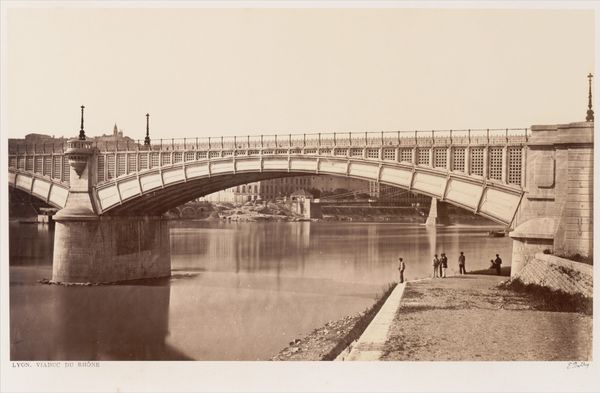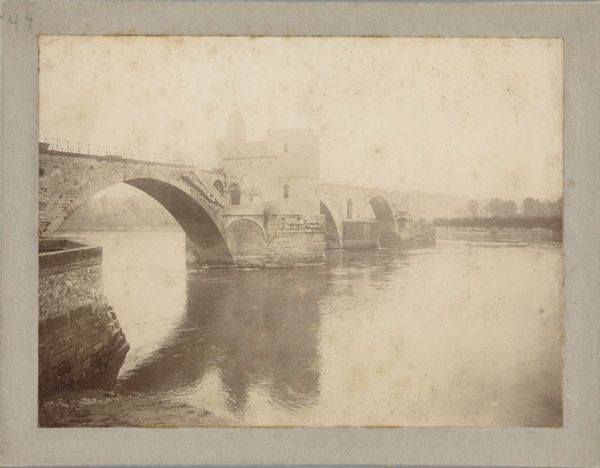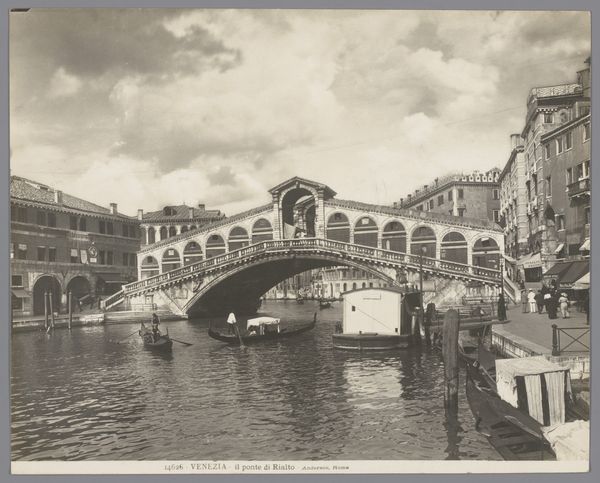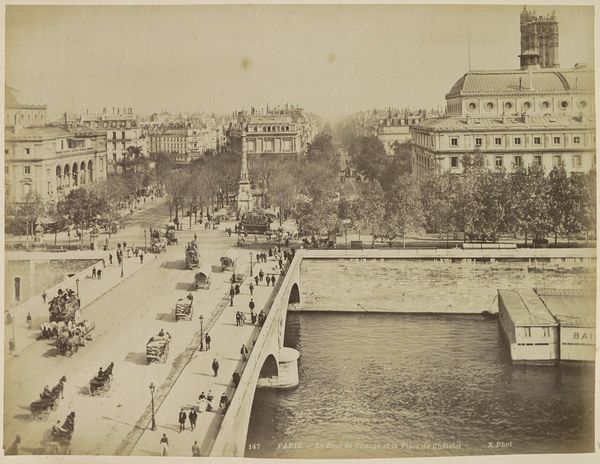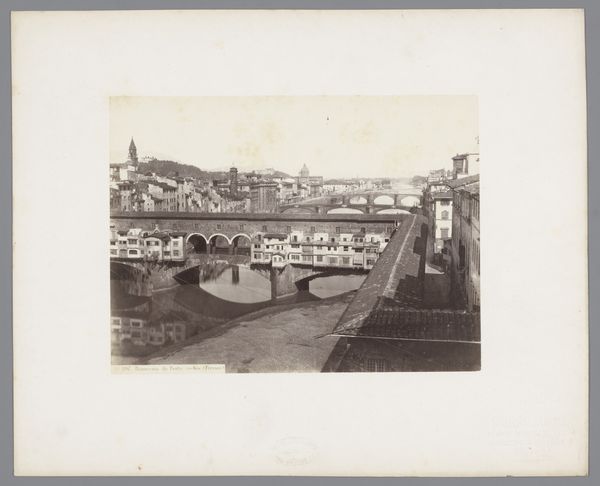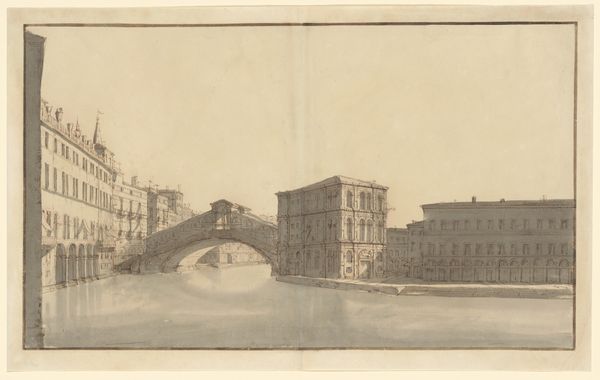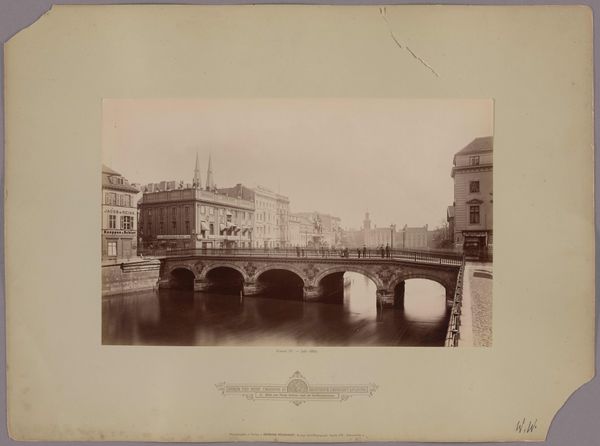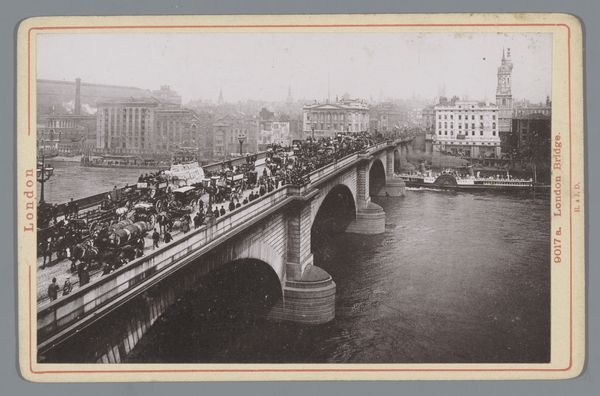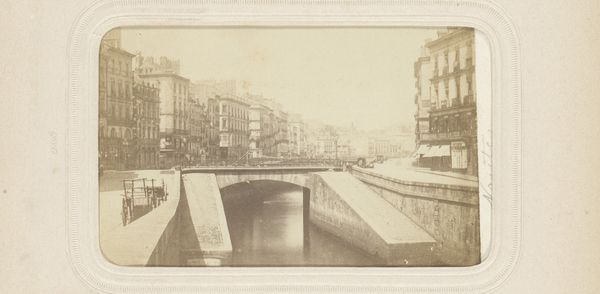
print, photography
# print
#
landscape
#
photography
#
cityscape
Dimensions: 19 × 25.2 cm (image/paper)
Copyright: Public Domain
Curator: What a strikingly composed image! Here we have an anonymous photograph, titled "Untitled", captured sometime in the 1870s and now residing at the Art Institute of Chicago. It’s a print capturing a cityscape, seemingly focused on a grand aqueduct. Editor: My immediate impression is the overwhelming beige quality of the image. The entire scene seems bleached in sepia, imparting a sense of melancholy, a visual encoding of a faded memory, where everything blends into an abstract record of industrial progress. Curator: Precisely. It’s fascinating how the photographer emphasizes this emerging industrial power represented by the aqueduct bearing a steam train, symbolizing advancement. Aqueducts have ancient roots—this photo shows modern power riding atop old structures. Editor: And that materiality – look at the rough-hewn quality of the stonework contrasted against the sleek engine above. What kind of labor went into its construction? One almost expects to see a film grain rendering the physical exertion needed. That bridge, in essence, becomes a visual monument to unseen, repetitive labor. Curator: I’m intrigued by the compositional choices. The strong horizontal line of the bridge nearly bisects the image, acting as a visual barrier between industry and the river activity below, yet the people are the same on both sides. They are there before industrial change transforms them into faceless subjects within the urban fabric. Editor: I agree, those human elements add necessary contrast and reveal their roles, those workers are so busy but look diminutive in comparison. The picture, at its core, showcases material conditions and class relations—how access to capital, technology, and space shape and are shaped by the laborers performing under the shadows. Curator: Perhaps what is unspoken here carries equal weight to what’s captured. This photograph shows the way the present holds signs of its former condition. A landscape marked by cultural transitions made permanent with a relatively new medium like photography is ripe with visual ironies. Editor: It really makes you contemplate our relationship to the landscapes we inhabit. It's the weight of material history; the processes involved in erecting, maintaining and capturing such scenes. That bridge and train now act like silent material witnesses to the enduring socio-technical conditions that are reshaping Paris, the old and new brushing against each other.
Comments
No comments
Be the first to comment and join the conversation on the ultimate creative platform.
